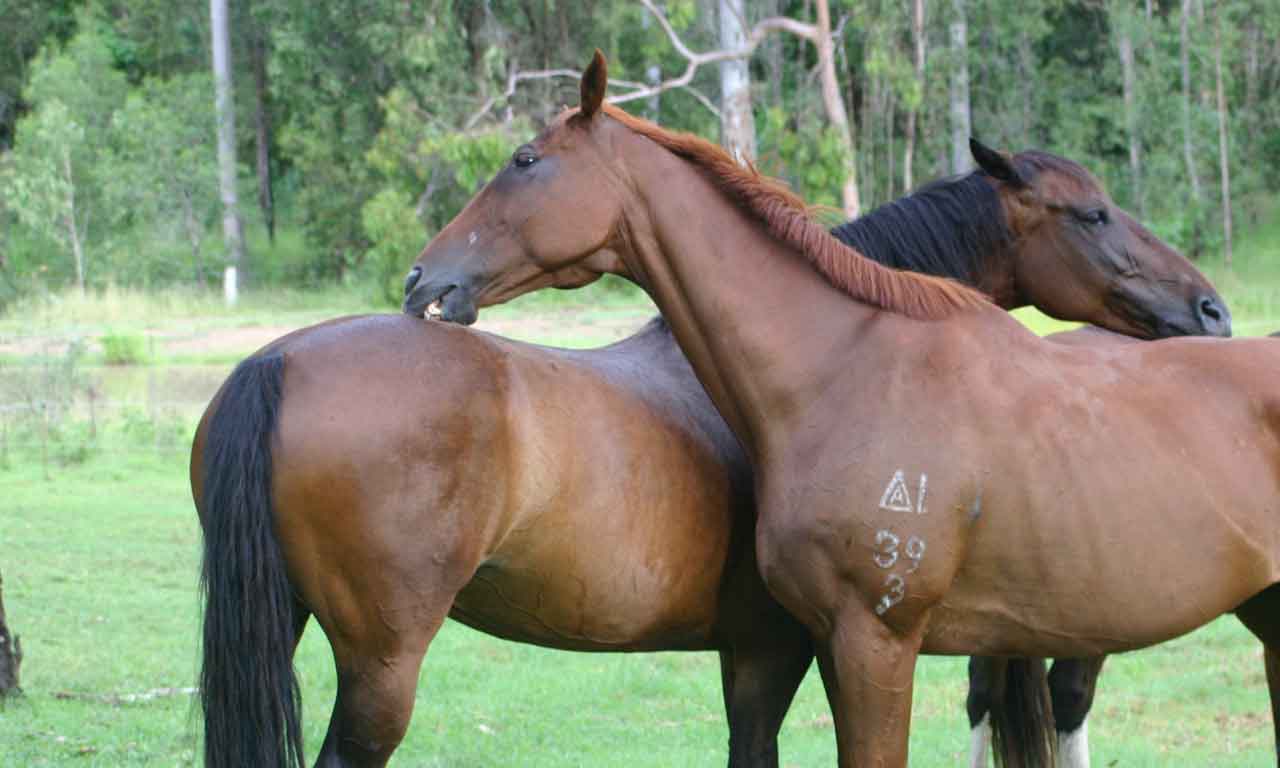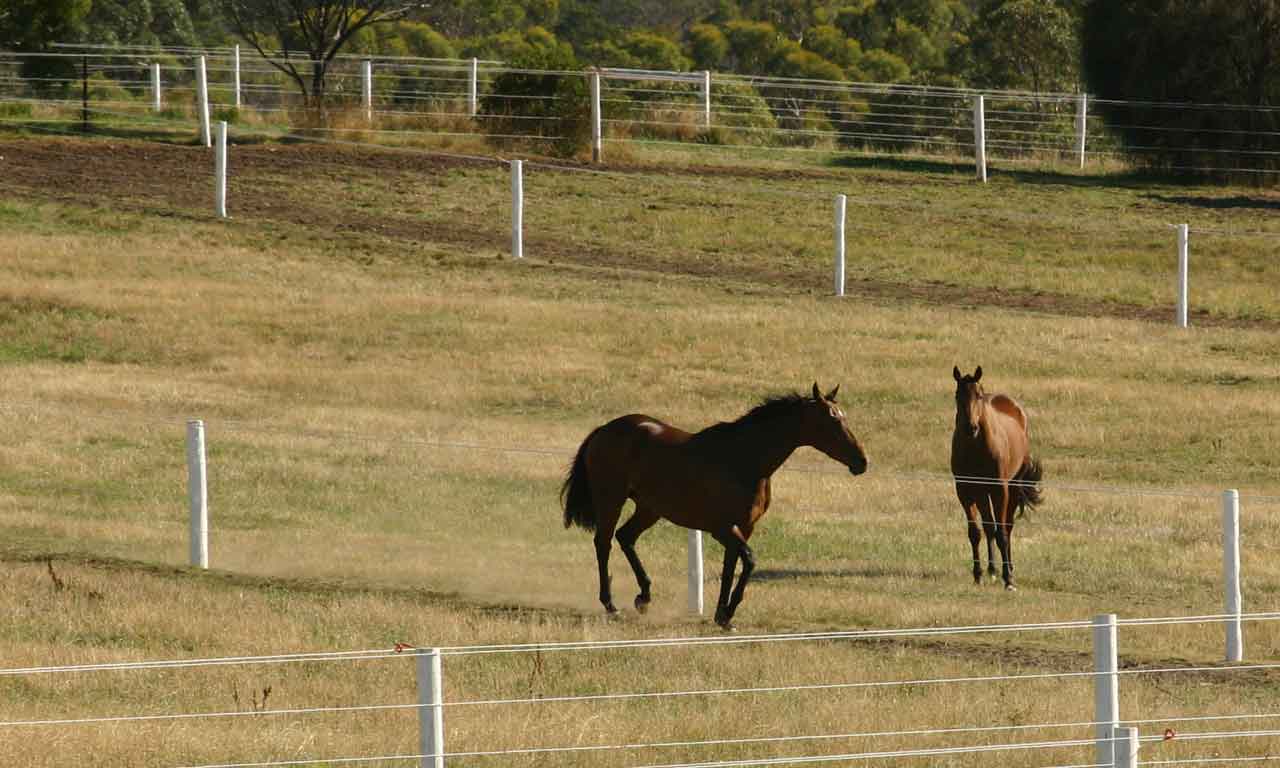What is ESSENTIAL exercise for a horse?
May 15, 2021
Horses require daily exercise because they are essentially grazing athletes. This does not mean you have to ride them every day (or even at all), but you need to provide the right environment so that they can move enough to stay healthy or provide structured exercise (or both).
Providing actual exercise (or exercise opportunities) is an essential part of caring for a horse. It is not acceptable to keep horses confined in small spaces without providing lots of opportunities for movement.
Insufficient exercise leads to obesity problems and can result in issues such as Laminitis - a dangerous condition of the hooves. It also leads to many other physical health problems.
Insufficient exercise can also lead to problems with stereotypic behaviour (mental health) as a horse is 'hard wired' to move and will attempt to do so even when prevented from doing so (hence 'box walking', 'weaving', etc.).
Why do horses need to keep moving and have a daily workout?
Daily movement is crucial to having a healthy horse, both physically and mentally. Daily exercise gives the following benefits:
- Exercise helps the bones and hooves to develop and keeps them strong. Horses rely on movement to keep their circulation working correctly (blood and lymphatic fluid circulation). Every step a horse takes helps by 'pumping' blood and lymphatic fluid back up the legs. The horse's hoof has evolved to expand and absorb the downward pressure of the horse (as the hoof touches the ground) and contract to push fluids back up again as the hoof leaves the ground. So movement keeps the lymphatic fluid moving around the body. This is why horses that do not move enough tend to develop 'filled legs', where the lower legs fill with fluid due to the horse standing still for too long. This fluid usually disappears once the horse is exercised. However, it can become a chronic condition in horses that are over-confined long-term.
- Exercise helps to keep the heart strong and the lungs healthy and clear. It also develops and tones the muscles, tendons and ligaments.
- Exercise keeps the digestive system working correctly - horses are designed to digest food as they walk.
- Exercise builds fitness. Without exercise, a horse will lose stamina and endurance and will have less resistance to illness and disease due to a compromised immune system.
- Exercise helps with mental health. Horses that are confined without the right kind of exercise opportunities suffer mentally. The Covid Pandemic (and its subsequent lockdowns) has brought it home to people what it feels like to have their freedoms restricted. Even some people who previously thought that confining horses to stables was acceptable have started to empathise more with horses in this situation.
How much exercise does a horse or pony need?
Horses kept in small yards or stables should be turned out daily onto pasture (preferably with other horses) or into a larger area (again, preferably with other horses). Being with other horses increases their movement. The best way to maximise activity is to turn horses out to graze with other horses. They will then walk steadily for several hours. This is the ideal form of essential exercise for a horse (more on this later).
Horses that are kept 'at grass' (pastured) and can move around may not need structured exercise as well; however - see the section lower down - Is turnout on pasture good enough exercise for a horse?
Does being turned out in 'individual' 'private' paddocks (common in boarding/agistment/livery yards) count as being turned out with other horses?
No.
It is better than not being turned out at all, but horses cannot carry out their normal behaviours if fences separate them. These behaviours include 'mutual grooming' and play sessions and moving around a grazing area as a herd.

How much do free-living horses move?
Horses are naturally very active animals. In the wild/feral situation, horses cover many miles/kilometres a day. They travel between where the water is (the water hole) and where feed is (grassland pasture) in what is termed a 'home range'. This home range is just large enough to contain the needed resources.
In an area/region/country with more abundant resources (such as many parts of Europe), the home range will be relatively smaller (but still much larger than a horse property). When the resources are scarce (such as for the feral horses of Australia), the home range is much more extensive.
The feed near the water hole is eaten out first, so for much of the year; the horses have to travel increasingly larger distances to obtain the variety of plants and the volume that they need to keep them healthy. This keeps them moving for many hours a day.
This movement is mainly steady walking (grazing as they go) interspersed with bouts of faster activity. If the feed is abundant, there will also be time for play (mainly the younger horses and the colts in a 'bachelor group').
So in the free-living situation, horses are not moving just for fun (unless they are playing); they are moving out of necessity. They must move to feed because the feed does not come to them -an important point when you think about it.
When we keep horses in captivity, they usually do not get enough exercise because it is difficult to provide the actual space for this to happen. We would need several hundred acres for horsekeeping if we want to keep horses 'naturally'.
It is possible to do an excellent job of keeping horses in captivity without having so much land as long as you understand why movement is vital to a horse and how much they need to move. You can then attempt to provide the right conditions so the horse can move as much as possible.
If you are interested in learning about creating more movement through better land management, you can sign up for the free mini-course about Horses, pasture and grazing www.equiculture.net/equiculture-free-mini-course
Is turnout on pasture good enough exercise for a horse? Yes and no:
Horses that live at pasture with other horses in a herd will generally exercise themselves, especially if the pasture is biodiverse. This is because horses walk around looking for variety (as they would in a free-living situation).

Horses walk while grazing, looking for variety (as they would in the wild). Horses have to keep walking to find new plants continuously. A paddock with good biodiverse pasture makes a horse move more.
Horses that are turned out alone – even if it is in a pasture with good grazing – tend to spend more time standing around (usually where they can see other horses) rather than grazing and walking sufficiently. They also miss out on opportunities for mutual grooming and play behaviour.
As already mentioned, horses will not move just for fun (even though it is good for them) unless they are grazing/playing or are being exercised. If you turn a horse out for the day into a bare pasture, they may run around for the first few minutes to use up the excess energy that has built up from being confined overnight, but then they will stand around waiting to be fed/let back in (to where the supplementary feed is).
Horses that are turned out to graze alone will also tend to stand around more, even if there is pasture to eat. Some will do the opposite and carry out stereotypical behaviours such as 'fence walking' - unsuitable for the horse or the land!

This horse is 'running the fenceline' even though other horses are in neighbouring paddocks - very dangerous behaviour and bad for the land.
So pasture turnout may provide good exercise for a horse if:
-
They are turned out together.
-
The pasture is biodiverse, low sugar and highly fibrous.
-
They are not already obese.
Pasture turnout will not usually provide good enough exercise for a horse if:
-
They are turned out alone.
-
The pasture is a monoculture, short stressed plants, and high in sugar.
-
They are already obese.
What is good exercise for a horse exactly?
The best form of exercise is lots of slow, steady movement, which is what horses do when grazing. Occasional bursts of speed are also good for horses. A healthy horse does this regularly because it is part of normal behaviour. Healthy horses usually do this occasionally when turned out together in a paddock.
Remember that paddocks need to be safe enough so that horses can move fast without injuring themselves. This is why paddocks with rounded corners are better than square corners for groups of horses. The rounded corners keep the fast-moving animals moving around a corner rather than into it.
How large should a horse pasture be?
It depends - an acre per horse is often quoted as necessary, but it depends on how that land is set up and how horses are allowed or encouraged to use it. Read this article www.equiculture.net/the-equicentral-system for ideas.
Can horses take care of their own exercise needs?
Again, it depends:
- Provided with enough biodiverse, fibrous, low sugar pasture, plus companions, then maybe. Especially if they also have to walk to water etc. (The Equicentral System).
- Turned out alone, on high sugar plants, for a horse that is already too fat, then absolutely not.
- Turned out on a surfaced area, without grazing, but with hay, also no.
These are just a few examples. Every situation is different.
If not, then you need to provide structured exercise. Look out for a blog article coming up about traditional and novel forms of exercise for horses (and you).
If you are interested in learning about creating more movement through better land management, you can sign up for this free mini-course about Horses, pasture and grazing www.equiculture.net/equiculture-free-mini-course


















